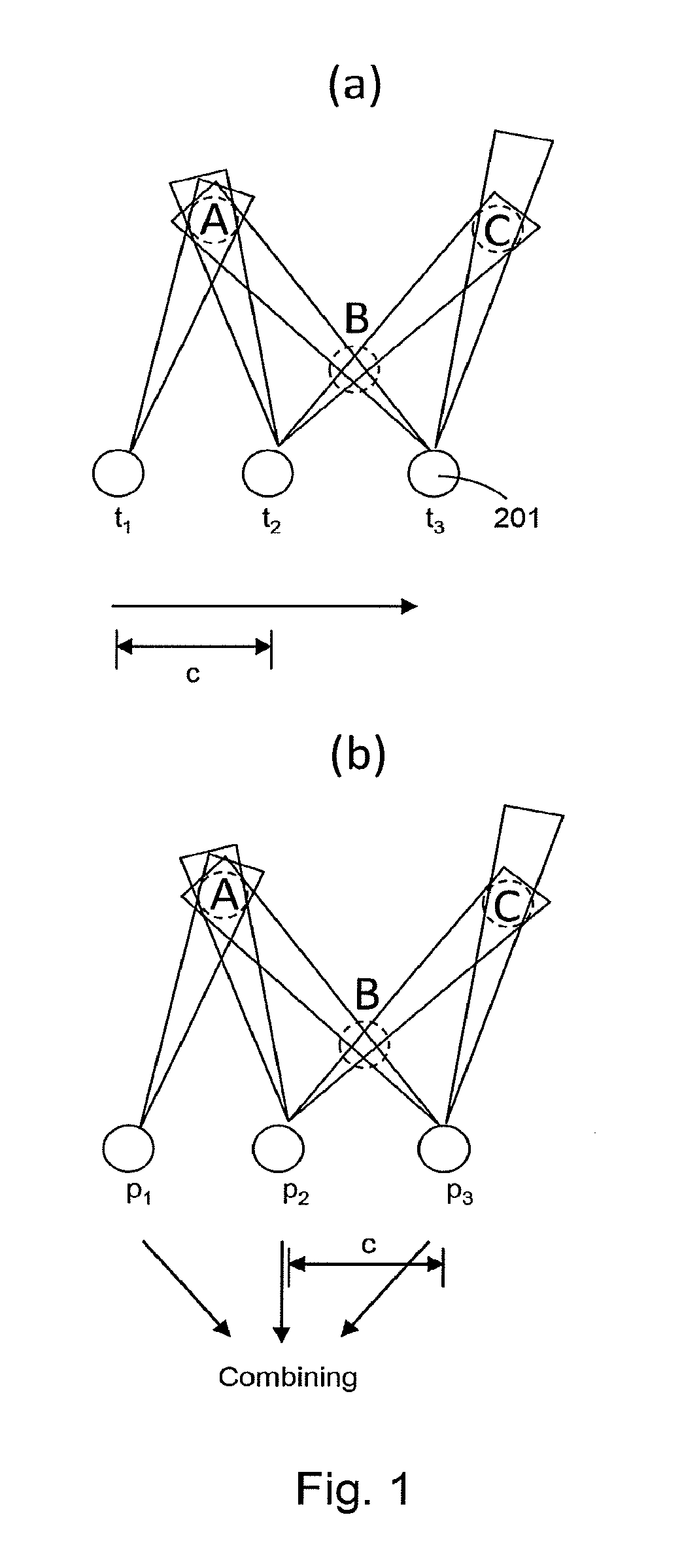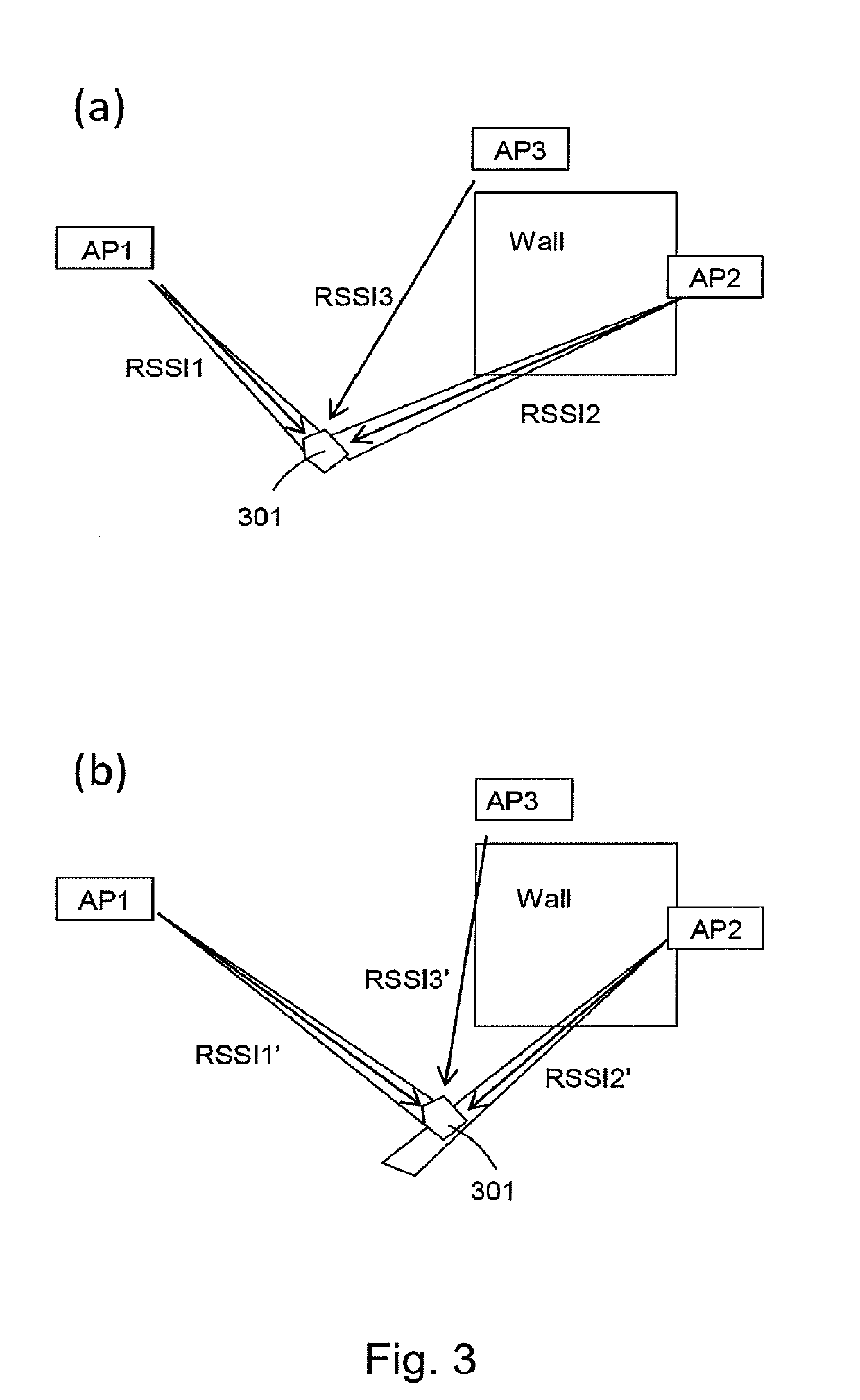Radio-location method for locating a target device contained within a region of space
a radio-location method and target device technology, applied in the direction of location information based service, transmission monitoring, instruments, etc., can solve the problems of propagation of inaccurate or unknown location estimates, inability to easily eliminate anomalies, and inability to accurately determine the location of the target devi
- Summary
- Abstract
- Description
- Claims
- Application Information
AI Technical Summary
Benefits of technology
Problems solved by technology
Method used
Image
Examples
first embodiment
[0012] there is provided a radio-location method of locating a target device that is contained within a region of space, the method comprising:[0013]obtaining a first set of detected signals by detecting, by one or more detectors at a plurality of points in space, a beacon signal from the target device, or by detecting at the target device, beacon signals sent from one or more radio transmitters in the region of space;[0014]determining, based on the characteristics of the first set of detected signals, a current estimate of the target device's location;[0015]obtaining successive sets of detected signals, each set of detected signals being obtained by detecting, at the one or more detectors, a beacon signal from the target device, or by detecting at the target device, beacon signals sent from the one or more radio transmitters;[0016]for each successive set of detected signals:[0017]retrieving the current estimate of the target device's location;[0018]determining, based on characteris...
third embodiment
[0027] there is provided a radio-location method of locating a target device that is contained within a region of space, the method comprising:[0028]obtaining a first set of detected signals by detecting, by one or more detectors at a plurality of points in space, a beacon signal from the target device, or by detecting at the target device, beacon signals sent from one or more radio transmitters in the region of space;[0029]determining, based on the characteristics of the first set of detected signals, a current estimate of the target device's location; and[0030]for each of one or more iterations:[0031]predicting, based at least in part on the current estimate of the target device's location, one or more new candidate locations for the target device;[0032]comparing the candidate locations with a radio map of the region of space, the radio map identifying obstructions to radio wave propagation contained within the region of space;[0033]identifying, from the one or more candidate loca...
PUM
 Login to View More
Login to View More Abstract
Description
Claims
Application Information
 Login to View More
Login to View More - R&D
- Intellectual Property
- Life Sciences
- Materials
- Tech Scout
- Unparalleled Data Quality
- Higher Quality Content
- 60% Fewer Hallucinations
Browse by: Latest US Patents, China's latest patents, Technical Efficacy Thesaurus, Application Domain, Technology Topic, Popular Technical Reports.
© 2025 PatSnap. All rights reserved.Legal|Privacy policy|Modern Slavery Act Transparency Statement|Sitemap|About US| Contact US: help@patsnap.com



